Report 22-8 | June 2022
The State of Wisconsin Investment Board (SWIB) invests assets for the Wisconsin Retirement System (WRS), the State Investment Fund (SIF), and four other funds. As of December 31, 2021, SWIB managed $165.7 billion in assets, including $147.2 billion in WRS assets. SWIB is governed by a nine-member Board of Trustees. Although SWIB is a state agency, its Board establishes the investment, budgeting, and staffing policies with which SWIB is required to comply.
Wisconsin Statutes require the Legislative Audit Bureau to biennially conduct a performance evaluation audit of the policies and management practices of SWIB. To do so, we analyzed investment returns, expenses, staffing, and compensation issues for 2020 and 2021.
SWIB manages WRS assets in two funds: the Core Fund, which is a diversified fund that typically is invested for the long term, and the Variable Fund, which is a public equities fund. SWIB invests WRS assets among several asset classes intended to balance investment performance with risk and costs over the long term. SWIB uses market-based benchmarks to measure the performance of WRS assets. For the five-year period ending in December 2021, the Core Fund benchmark was 11.9 percent and the Core Fund average annual investment return was 12.5 percent. The five-year benchmark for the Variable Fund was 15.6 percent and the Variable Fund average annual investment return was 15.5 percent. When we compared the performance of the Core Fund to the performance of nine other large public pension plans, we found the five-year investment return for the Core Fund ranked third among the peer group.
SWIB seeks investment returns to meet a long-term expected rate-of-return assumption for the WRS. This assumption decreased in recent years. This assumption was 7.2 percent from 2011 through 2017, 7.0 percent from 2018 through 2020, and 6.8 percent as of December 2021. SWIB does not anticipate that it will attain the 6.8 percent long-term expected rate-of-return assumption over the next 10 years. SWIB indicated it has become more difficult and expensive to generate investment returns to meet the long-term expected rate-of-return assumption. After the 20-year average annual investment return had been lower than the long-term expected rate-of-return assumption from 2016 through 2020, it exceeded the assumption as of December 2021. The 30-year average annual investment return declined since 2012, but it remained above the long-term expected rate-of-return assumption and was 8.7 percent as of December 2021.
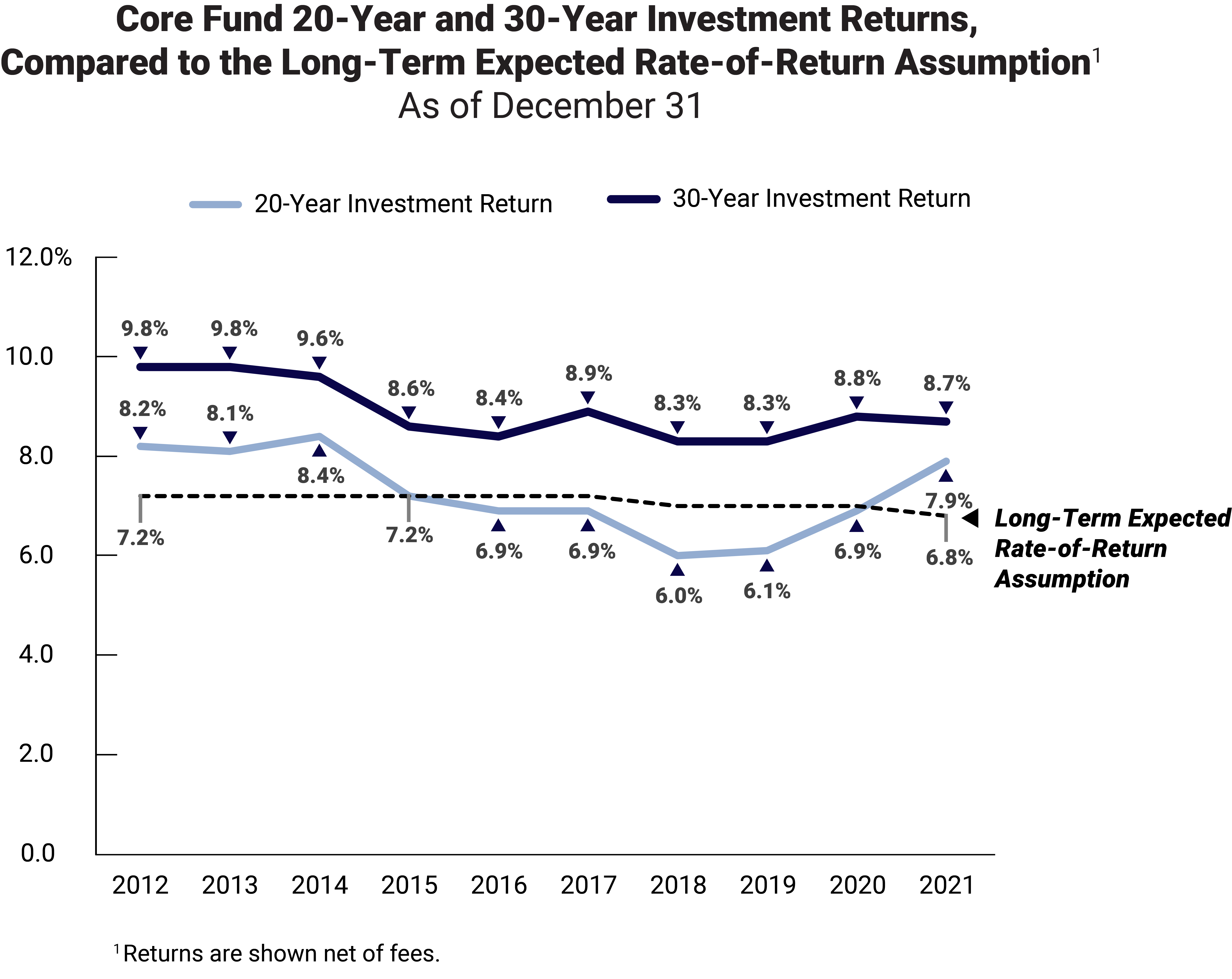
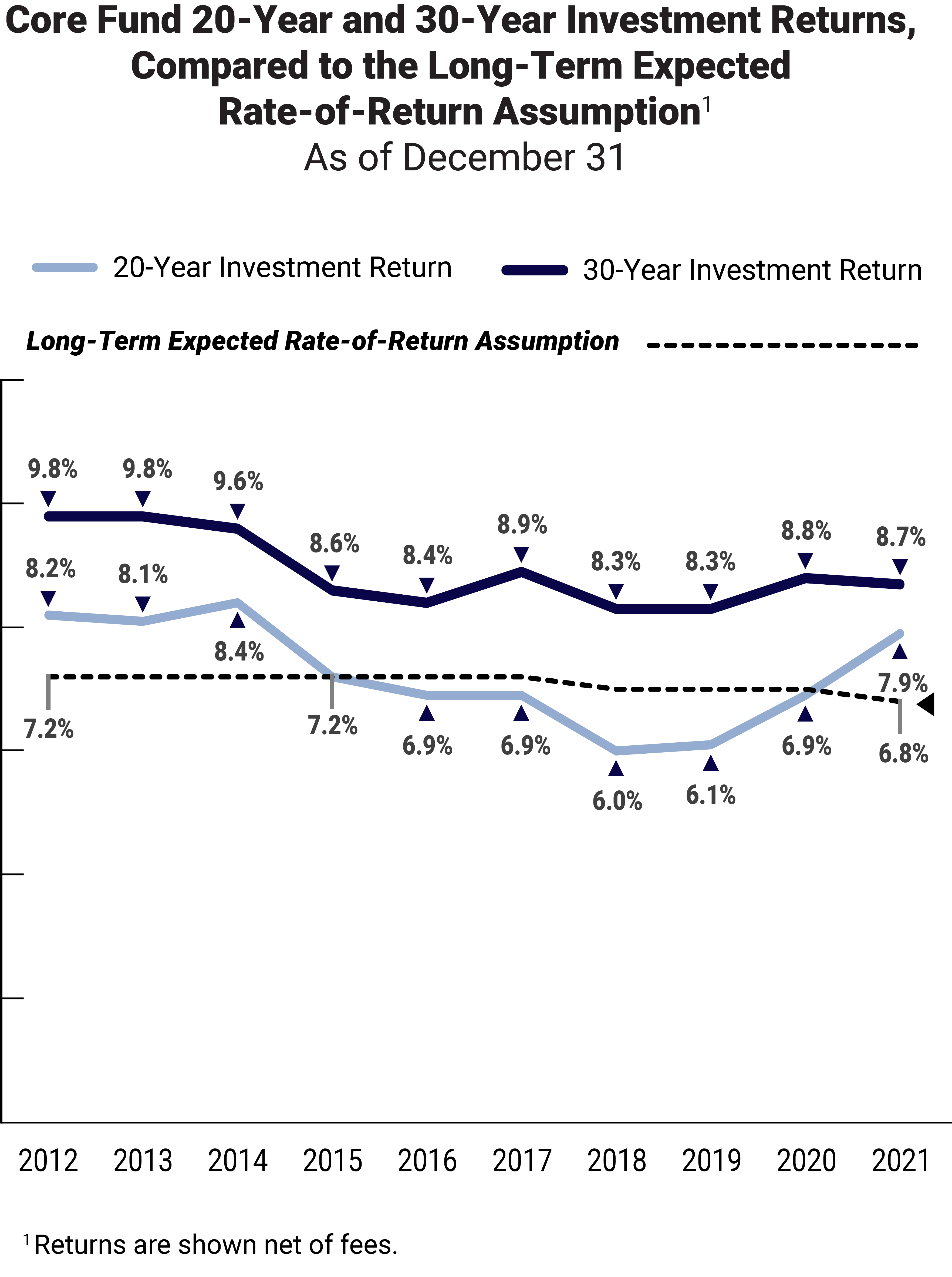
SWIB aims to increase the proportion of assets it manages internally because the cost to manage assets externally is more expensive. SWIB indicated that the decrease in the proportion of assets managed internally resulted, in part, from an increased use of external managers who execute more-complex strategies that required investment infrastructure and capabilities that SWIB does not possess.
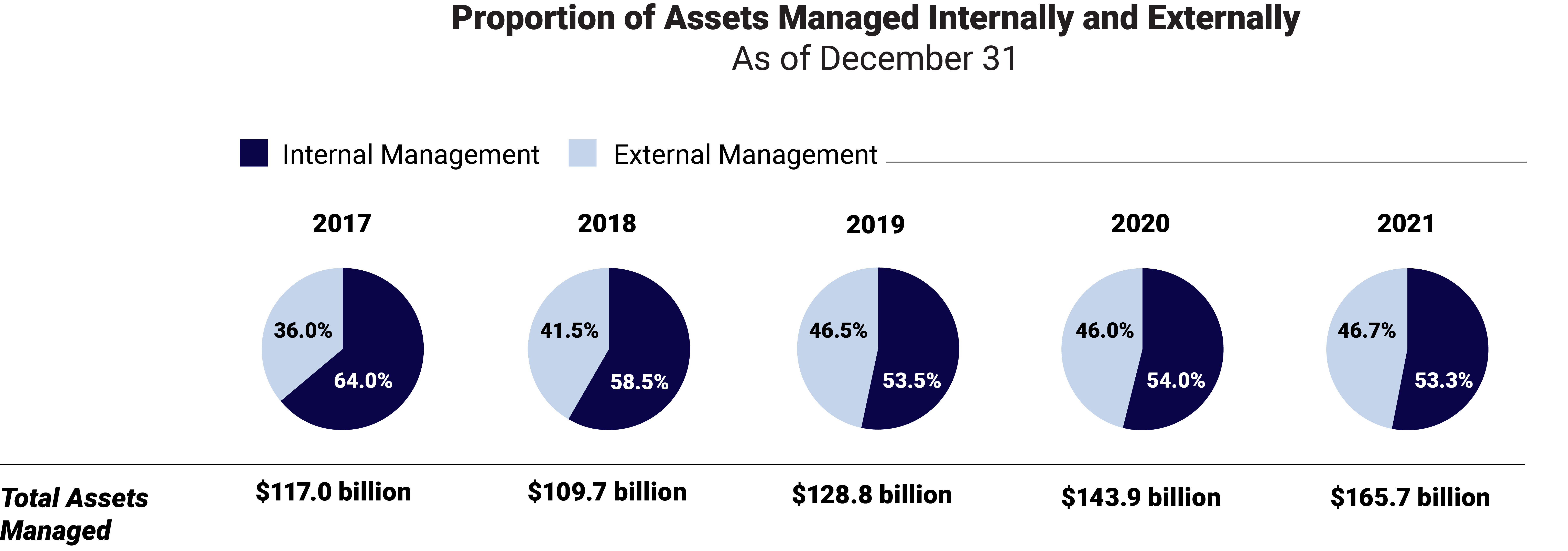
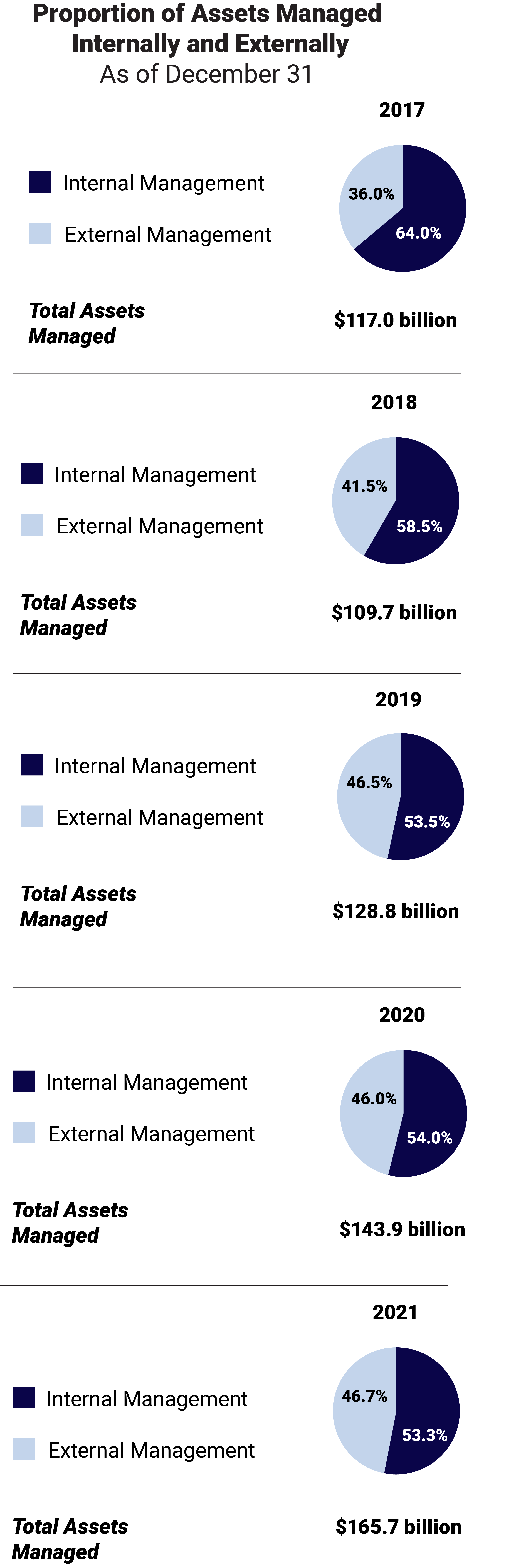
SWIB did not establish either a target or target ranges for the proportion of its assets to manage internally, and it did not establish a written plan for moving certain investment strategies to internal management. We recommend that SWIB develop a multi-year strategic plan that includes such goals. Doing so will provide the Board with an opportunity to monitor SWIB’s progress, provide input, and assess more thoroughly SWIB’s future requests for IT, staffing, and other significant expenditures SWIB believes are needed to achieve strategic plan goals.
SWIB’s annual expenses increased primarily because of an increase in management fees SWIB paid to external investment managers and a growth in the total amount of assets SWIB managed.
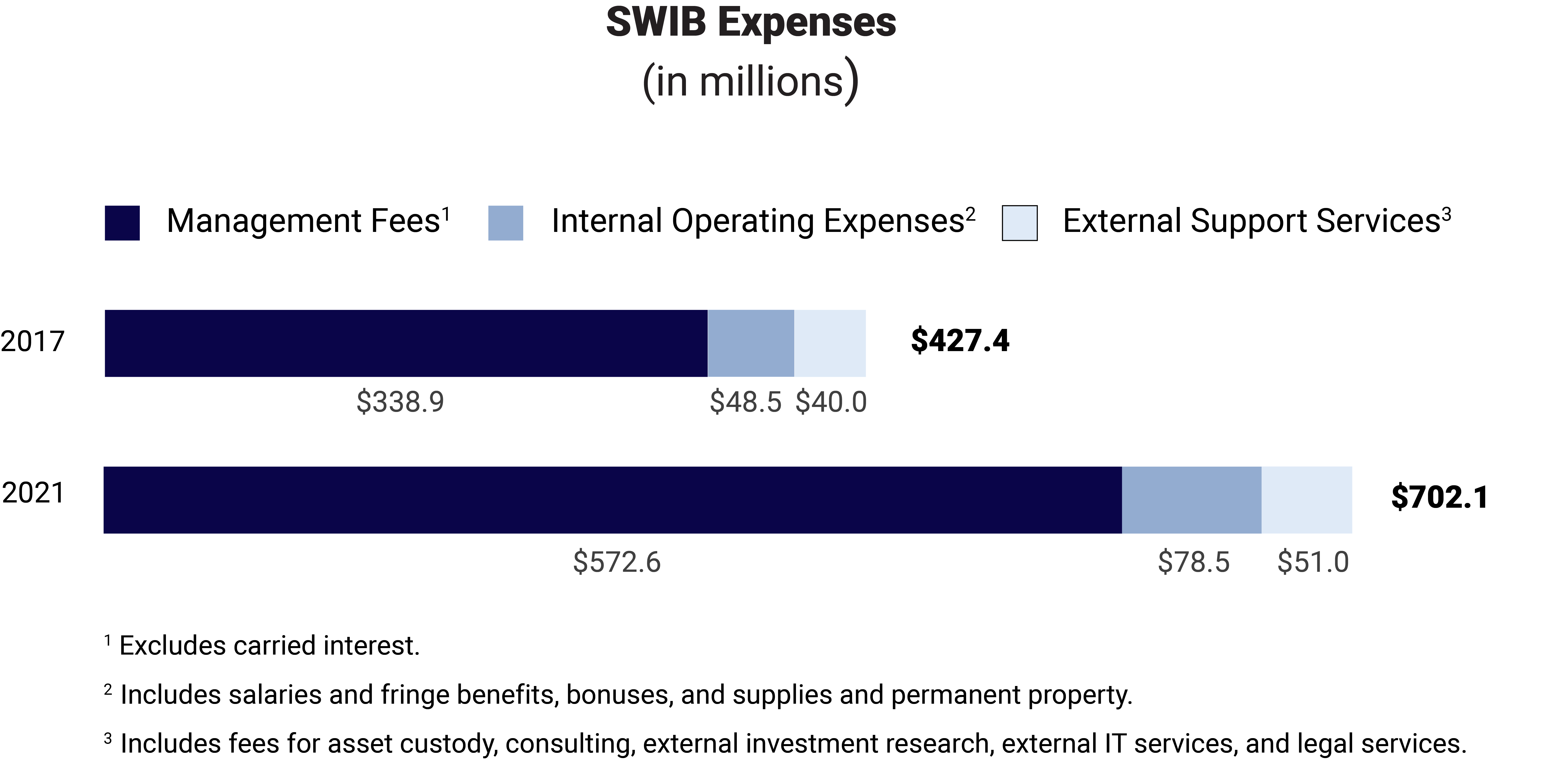
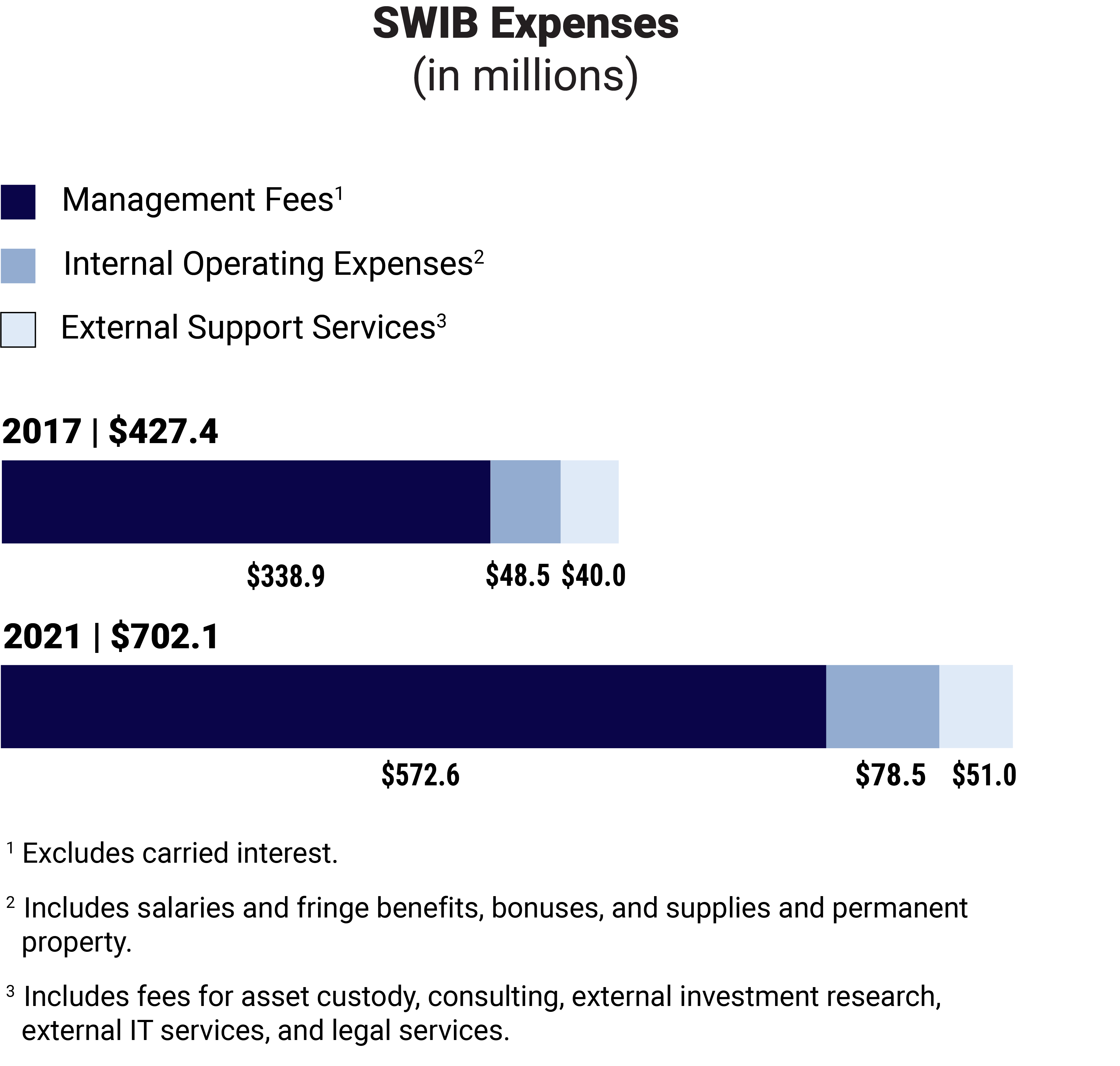
In addition to these expenses, some private equity and real estate investments incur performance fees in the form of carried interest, which is paid when an external fund manager liquidates an investment and the rate of return exceeds an agreed upon minimum rate. In 2021, carried interest costs totaled $1.3 billion.
We analyzed the total investment expenses per $100 of assets that SWIB managed. If the investment expenses increase only because of an increase in the amount of assets managed, expenses per $100 of assets managed remains consistent. However, SWIB’s total investment expenses, including carried interest costs, for each $100 of assets managed increased from $0.61 in 2017 to $1.25 in 2021. This increase occurred primarily because of higher fees paid to external investment managers.
In December 2021, SWIB had 290 full-time equivalent (FTE) positions including 26.0 FTE positions that the Board of Trustees approved in 2020 and 29.0 FTE positions that it approved in 2021, for a total increase of 55.0 FTE positions since December 2019. SWIB expects its staffing level will increase to 320 FTE positions by 2026, in part, because it expects to increase the amount of assets it manages internally. In addition, SWIB employed 23.4 contract staff as of June 2022.
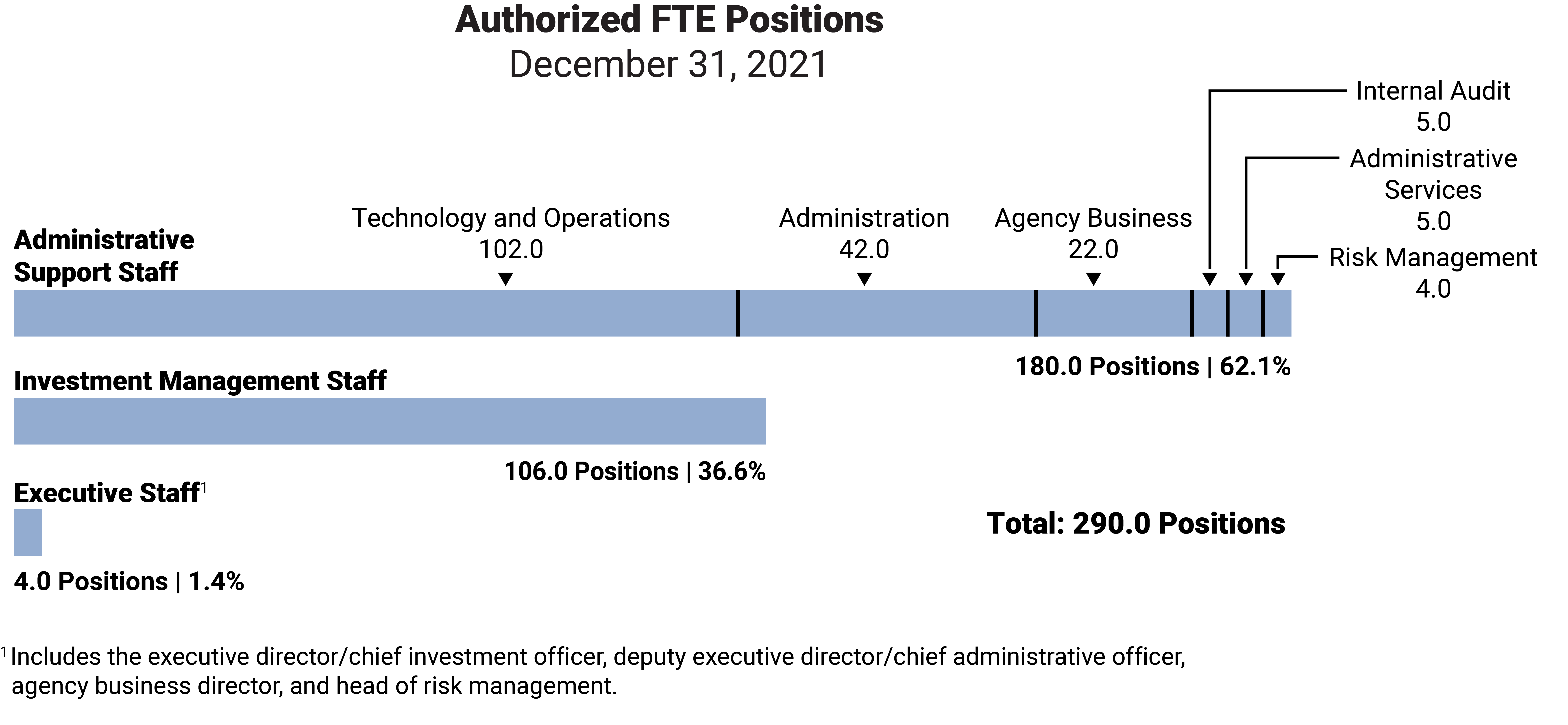
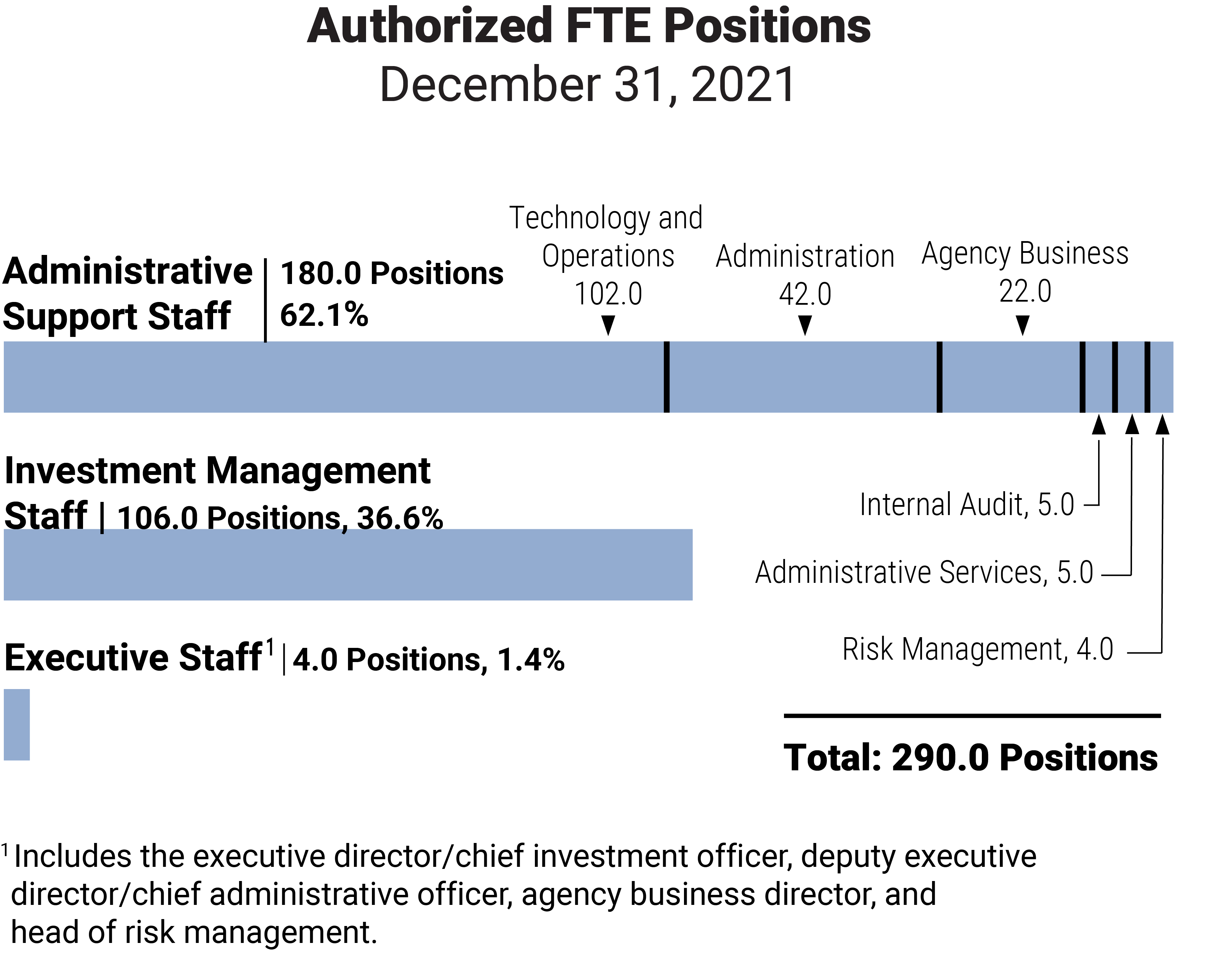
To update and expand its data management, investment management, and operational capabilities, SWIB initiated several IT projects in recent years. In 2017, SWIB completed the $45.1 million Agile Reliable Investment Enterprise System (ARIES) project, which was intended to update and improve its capabilities and allow it to manage a greater proportion of investments internally. In March 2021, SWIB completed the $3.3 million SWIB Foundations project, which was intended to help improve data quality and consistency. We recommend that SWIB continue to assess and report annually to the Board on its progress in improving its data management.
In 2019, SWIB began Project Centum, which is intended, in part, to allow SWIB to increase the proportion of assets it manages internally. SWIB anticipates completing the project in several phases. Although it established a budget for each project phase, SWIB did not establish an overall budget for the project. In June 2021, SWIB reported the project’s progress was delayed because of unanticipated software customizations that were needed. In December 2021, SWIB reported that the cost of Project Centum will increase by $6.9 million. We recommend that SWIB assess in writing the planning and vendor evaluation processes it used for the project to identify improvements that could help avoid delays and unexpected expenditures on future IT projects.
The Board of Trustees approves compensation policies and annual bonuses for staff. In 2021, SWIB compensation to staff through salaries, bonuses, and fringe benefits totaled $72.5 million.
One way to assess investment performance is by considering excess returns, which are the portion of investment returns that are greater than the market-based benchmarks. The amount of bonuses awarded for 2021 performance increased by $2.5 million from the prior year even though the five-year excess return increased from 0.38 percent to 0.43 percent and the one-year excess return declined.

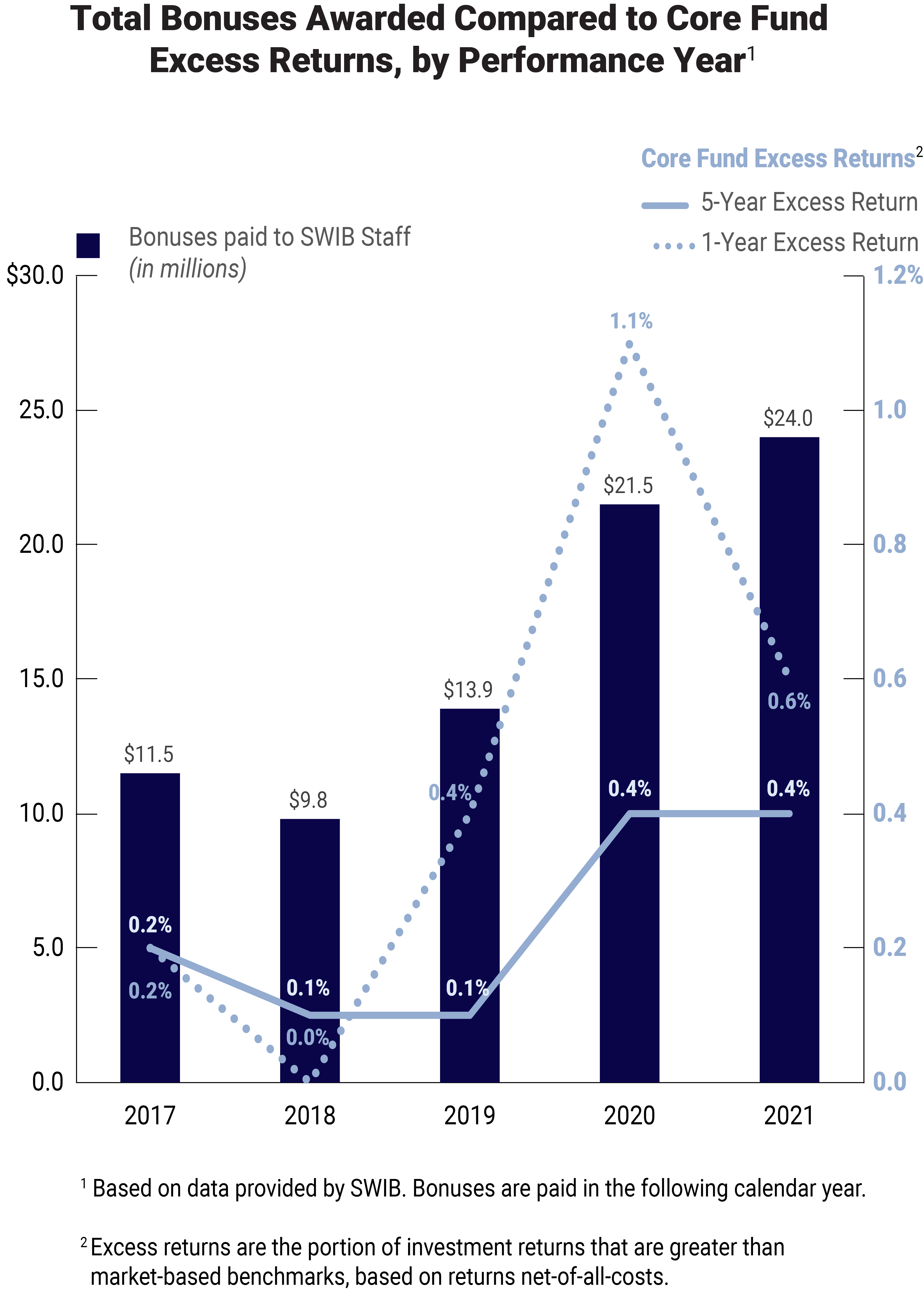
SWIB targets overall staff compensation to approximate the median total compensation of a specified comparison group. Overall compensation for investment staff was at 67.1 percent of the comparison group median for 2020 performance, which was the most recent information available at the time of our audit.
Excluding bonuses, the total amount of salary increases for market adjustments, merit increases, and promotions was $2.8 million in 2021. SWIB did not document the precise reasons for awarding salary increases to staff, and we recommend SWIB make improvements. SWIB also awarded signing, retention, and severance payments to staff totaling $416,000 in 2020 and $185,000 in 2021. We recommend SWIB modify its policies, including to establish more-precise criteria for determining the amount of signing and retention bonuses to award.
We compared Board practices for providing the public with information about Board meetings with the practices of the governing boards of 20 other organizations, including 13 public pension funds and 7 Wisconsin state agencies. As of April 2022, 17 governing boards allowed the public to watch or listen to governing board meetings online, as SWIB’s Board of Trustees did during the public health emergency, but did not do so for meetings held after December 2021.
Please see the complete list of our recommendations here.




